Showcasing the DNR: Summer’s dog days
“Summertime and the living is easy, fish are jumpin’ and the cotton is high,” – George Gershwin
By JOHN PEPIN
Deputy public information officer
Michigan Department of Natural Resources
Out under the powdery blue morning skies, the sun was already beating down like someone had left the woodstove door wide open.
I was surprised at how intently I could feel the sun’s rays through the long sleeves of my shirt – seemingly penetrating deep into my skin, perhaps all the way to the bone.
The day would certainly become what people familiar with ironing clothes would call a scorcher. I tend to wilt like a daisy in these conditions.
Despite my affinity for California, after living there for many years, the hot summer sun can slow me down quickly without some shade, a place to rest and a cool drink.
I saw a picture a few days ago that showed the temperature at the Death Valley National Monument at 130 degrees.
The highest temperature I’ve experienced was 112 degrees while driving through Las Vegas on a summertime trip headed back to California from Michigan.
On another occasion, during a late May birding trip to southeastern Arizona, we had to get up quite early to do our hiking and birdwatching before wildlife activity would drop off and the temperatures would jump up into the mid-90s by 10 a.m.
Thank goodness the heat out there in those Arizona and New Mexico deserts is dry. Under those temperatures, coupled with midwestern humidity, it would be unbearable.
I walked along, just inside a line of trees where the shade of the forest cloaked me in coolness and respite from the bright and glaring sunshine.
There was no dry heat here on this Michigan morning.
The humidity was high, making it feel like being in a sauna with no cupped hands filled with cool water to breathe from. The seemingly thick air was tight up against my nose and mouth, like a furry mitten.
For me, it’s an interesting time of year, one when the forest creatures tend to be quieter and less visible while the human activity and associated noise levels are greatly increased.
I tend to be like the deer that retreat to the quiet forests to rest and relax during the daytime swelter, or some of the birds that have already done their breeding and are likely already anticipating their approaching migration south before wintertime.
The days between July 3 and Aug. 11 are typically the warmest of the year – famously referred to as the “dog days” of summer.
They are called that because the star Sirius, which is nicknamed “the Dog Star” and is the brightest star in the constellation Canis Major (that resembles a dog), appears during this time each year in the same place in the sky as the sun.
“In the summer, Sirius rises and sets with the sun. On July 23rd, specifically, it is in conjunction with the sun, and because the star is so bright, the ancient Romans believed it actually gave off heat and added to the sun’s warmth, accounting for the long stretch of sultry weather. They referred to this time as dies caniculares, or ‘dog days,’” according to The Old Farmer’s Almanac.
“Thus, the term Dog Days of Summer came to mean the 20 days before and 20 days after this alignment of Sirius with the sun.”
To me, the summertime activity in the forest passes by like a Fourth of July parade.
Here come the deer. They are showing off their new fawns, like the sandhill cranes presenting their colts along the shoulders of highways and across farm fields.
In fact, many species of birds of highly varied stripe and color are tending to their young at this time of the season. Some, like robins, may hatch two, three or even four broods in a single summer – with three to four eggs in each. Wow.
At home, there are families of downy woodpeckers and northern flickers, chipping sparrows, red-eyed vireos and ruffed grouse around our yard.
The lupines are done blooming, while the black-eyed Susans just started. Green apples are already on the trees. Blueberries and raspberries have ripened, and it won’t be long before the black and thimble berries will be ready to enjoy.
I make my way down to the creek, where those high temperatures of late have competed with passing thunderstorms in raising or lowering water depths and temperatures.
In some places, it looks like the contest has been a tie. In others, the water is low and warm, moving only sluggishly. Grass growth from the bottoms of these low-flow creeks is high – wavy and green, like a witch’s hair.
I walk upstream along the banks of a stream that always seems to have enough water to make its rapids and small waterfalls chatter. Today, the water flow is nearly bank full. I’m guessing an artesian well or spring is the source of its strength.
I get a physical itch in the palms of my hands as I see the deeper holes where trout are no doubt hugging the stream bottom waiting for food. I am not fishing today, just out walking, trying to stay cool while enjoying the scene.
I kneel at the river’s edge and plunge my hand into the fast water. It is very chilly and refreshing. I follow with my other hand. I lift a small amount of water up to my face and rub it across my nose, mouth and eyes.
It feels as though I am removing two saddle bags worth of sand from my skin. The water makes my face feel so clean, especially with the light breeze moving across it.
The heat and intermittent rains of these days of late have really allowed the plants to grow thick and deep with greenery. Everything along the stream is so lush and heavy with vegetation growth.
It fills in all the blank spots where winter and early spring would have allowed a passerby like me to gaze far into the forest through bare trees, downed limbs and almost no plants growing up from the forest floor.
I keep moving upstream along a small informal trail. Before long, I come to a pool at the bottom of a rapids where the creek turns on a sharp bend.
There are big boulders here to sit on, where I can feel misting spray from the water being sloshed between the rocks.
Animal tracks are covering an expanse of mud at the trail’s edge. Drag marks from a beaver’s tail are here too.
These remnants of activity represent actions taken likely under the cover of darkness or in the early and cool confines of the morning hours. A beautiful mourning cloak butterfly stops here too for a drink.
Kneeling against one of the rocks, I enjoy my shady spot along the water, listening to hear what my surroundings, along with my head, heart and soul, might have to say to me.
I am continuously surprised by how being deliberate about focusing and listening without and within can produce valuable insights that I might often carry with me for months or years later.
Today, I can hear piano music from a quiet and otherwise empty room in a large and vacant house. The furniture and the windowsills are dusty and old. It’s not a haunted house, just a lonesome house.
A staircase twirls up toward more empty rooms and an attic that is no doubt hot and uncomfortable; maybe one of those attic vents spins slowly in circles.
I sense an acquaintanceship and alignment with this house somehow, not that I ever lived here, but more that I can feel what it feels. There’s a usefulness outlived, a carrying on that’s been carried away and an understated but palpable obsolescence.
A blue jay swoops into the branches of a leafy maple on the far side of the creek and disappears. His loud crying calls announce my presence to anyone in the woods who will listen, popping the spell bubble cast around my reverie.
I return to the sound of the water moving over the rocks and the pleasant sights along this woodland waterway.
In not too long a walk, I reemerge at the edge of the trees and follow the line to a clearing where I move into the open under the still-hot sun.
Guideposts mark the distances to several locations on an old wooden sign. All these destinations are too far for me to reach today under these jungle-like conditions.
Another day, with cooler temperatures, will entice me to wander down these trails to new and unexplored places within this aged and knowledgeable forest.
I am the interloper here, the stranger, the searcher appearing silent and shadowy at the gate, looking for reason, truth and reconciliation.
With bowed head and heart, I will again return to enter nature’s grand sanctuary.
Check out previous Showcasing the DNR stories at Michigan.gov/DNRStories. To subscribe to upcoming Showcasing articles, sign up for free email delivery at Michigan.gov/DNREmail.
Note to editors: This feature previously issued as part of the DNR’s weekly Outdoors North column series. Contact: John Pepin, Showcasing the DNR series editor, 906-226-1352. An accompanying photo and a text-only version of this story are available below for download. Caption information follows. Credit Michigan Department of Natural Resources, unless otherwise noted.
Text-only version of this story.
Hawkweed: A field of summer grasses and blooming red hawkweed is shown from the Upper Peninsula. |
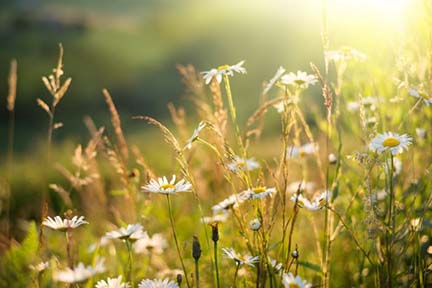





 Michigan’s forest products industry has hit a new peak, adding $26.5 billion to Michigan’s economy, according to
Michigan’s forest products industry has hit a new peak, adding $26.5 billion to Michigan’s economy, according to  Michigan’s 20.2 million acres of forest cover about half the state and are concentrated in the Upper Peninsula and the northern Lower Peninsula. Nearly 4 million of those acres are DNR-managed state forest lands.
Michigan’s 20.2 million acres of forest cover about half the state and are concentrated in the Upper Peninsula and the northern Lower Peninsula. Nearly 4 million of those acres are DNR-managed state forest lands.
 The forest products industry contributed 40,449 direct jobs during 2022 and supported a total of 88,275 jobs, according to the report.
The forest products industry contributed 40,449 direct jobs during 2022 and supported a total of 88,275 jobs, according to the report.
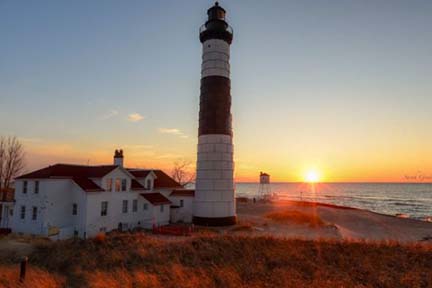
 Join the Michigan Department of Natural Resources for Hunter Safety Education Week, Aug. 12-18. More than 40 in-person classes will be offered throughout the state as additional opportunities to obtain a hunter safety education certificate.
Join the Michigan Department of Natural Resources for Hunter Safety Education Week, Aug. 12-18. More than 40 in-person classes will be offered throughout the state as additional opportunities to obtain a hunter safety education certificate.
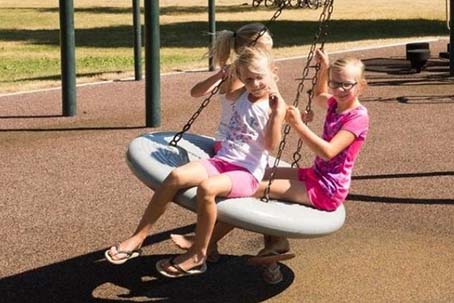
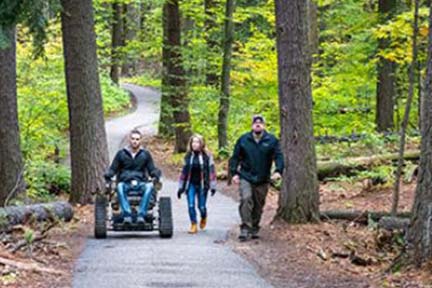

 Michigan is home to more than 13,400 miles of state-designated trails and local and regional options that offer something for everyone – there’s a reason we’re known as the Trails State.
Michigan is home to more than 13,400 miles of state-designated trails and local and regional options that offer something for everyone – there’s a reason we’re known as the Trails State.
 Just 30 minutes apart along the western coast of Saginaw Bay, Nayanquing Point and Wigwam Bay state wildlife areas offer some of the best birding opportunities anywhere in Michigan – and you’re invited to discover more about them during a free webinar next week.
Just 30 minutes apart along the western coast of Saginaw Bay, Nayanquing Point and Wigwam Bay state wildlife areas offer some of the best birding opportunities anywhere in Michigan – and you’re invited to discover more about them during a free webinar next week.
 The Michigan Natural Resources Commission will meet Thursday, July 11, in downtown Lansing. The day includes presentation of a Partners in Conservation Awards and DNR Parks and Recreation Division Lifesaving Awards, an update on the Brandon Road Project to prevent invasive carp movement into Lake Michigan, a discussion of proposed deer hunting regulations and a legislative update.
The Michigan Natural Resources Commission will meet Thursday, July 11, in downtown Lansing. The day includes presentation of a Partners in Conservation Awards and DNR Parks and Recreation Division Lifesaving Awards, an update on the Brandon Road Project to prevent invasive carp movement into Lake Michigan, a discussion of proposed deer hunting regulations and a legislative update.
 Cigarette butts, discarded food wrappers, pieces of plastic – all items we wish to avoid when we’re at the beach and have our toes in the sand.
Cigarette butts, discarded food wrappers, pieces of plastic – all items we wish to avoid when we’re at the beach and have our toes in the sand.
 See more pictures by
See more pictures by 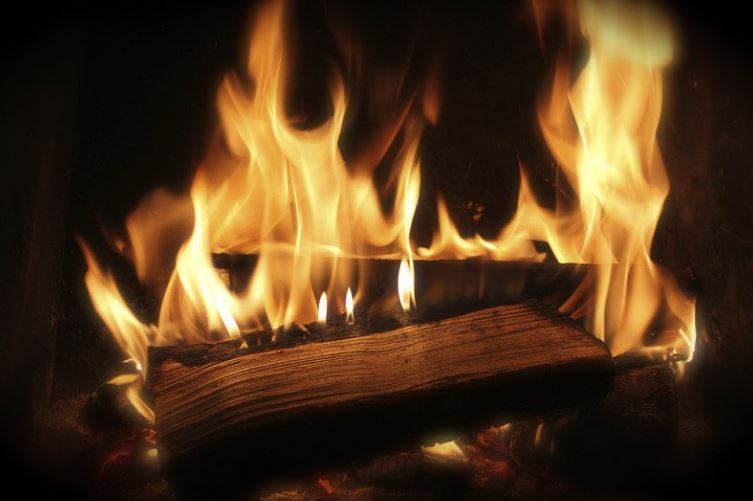
 Whether your Fourth of July plans include fireworks, camping, off-road vehicle riding or free time to work around the yard, take care to keep from sparking a wildfire.
Whether your Fourth of July plans include fireworks, camping, off-road vehicle riding or free time to work around the yard, take care to keep from sparking a wildfire.